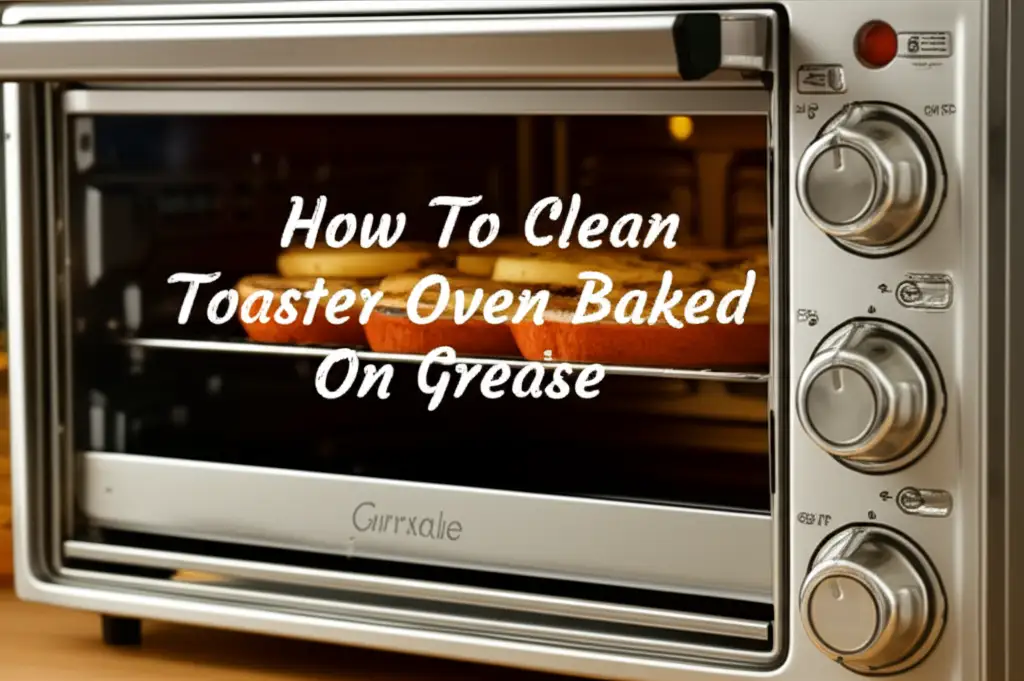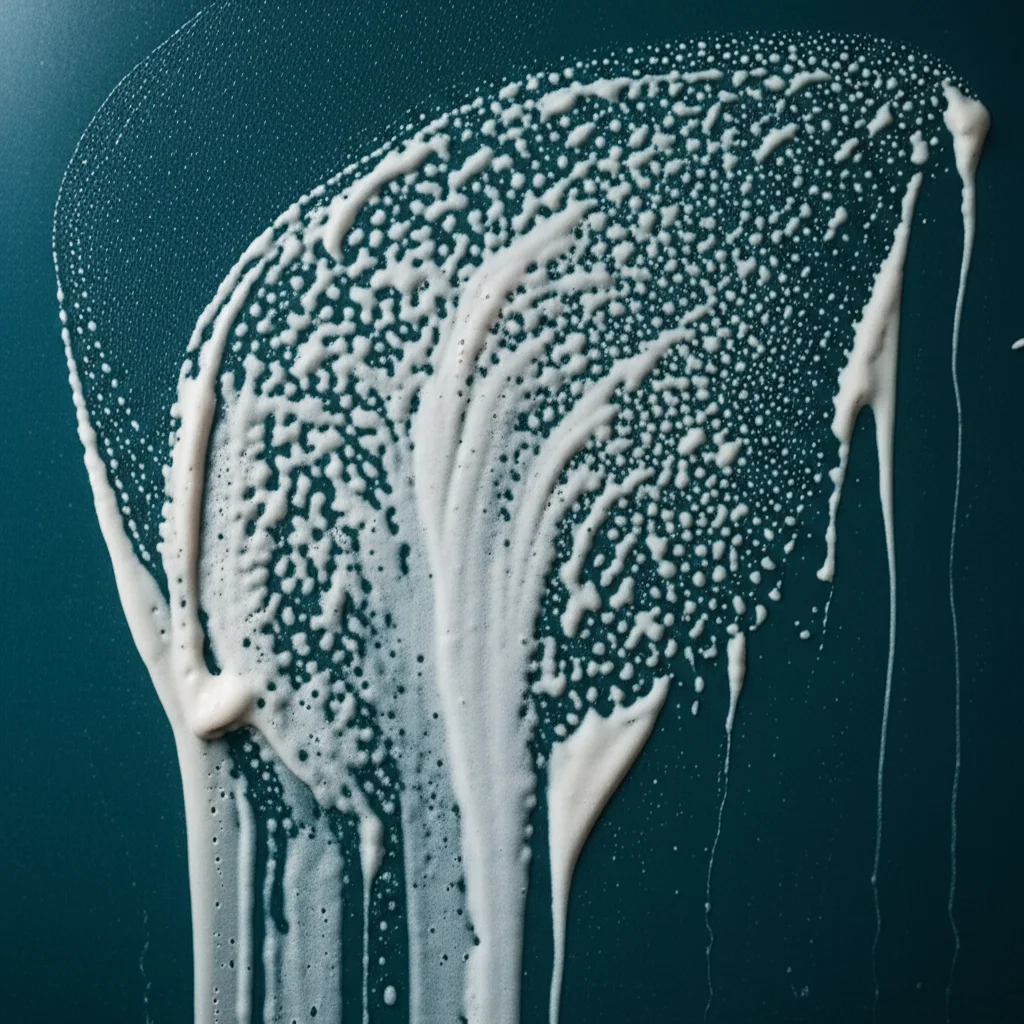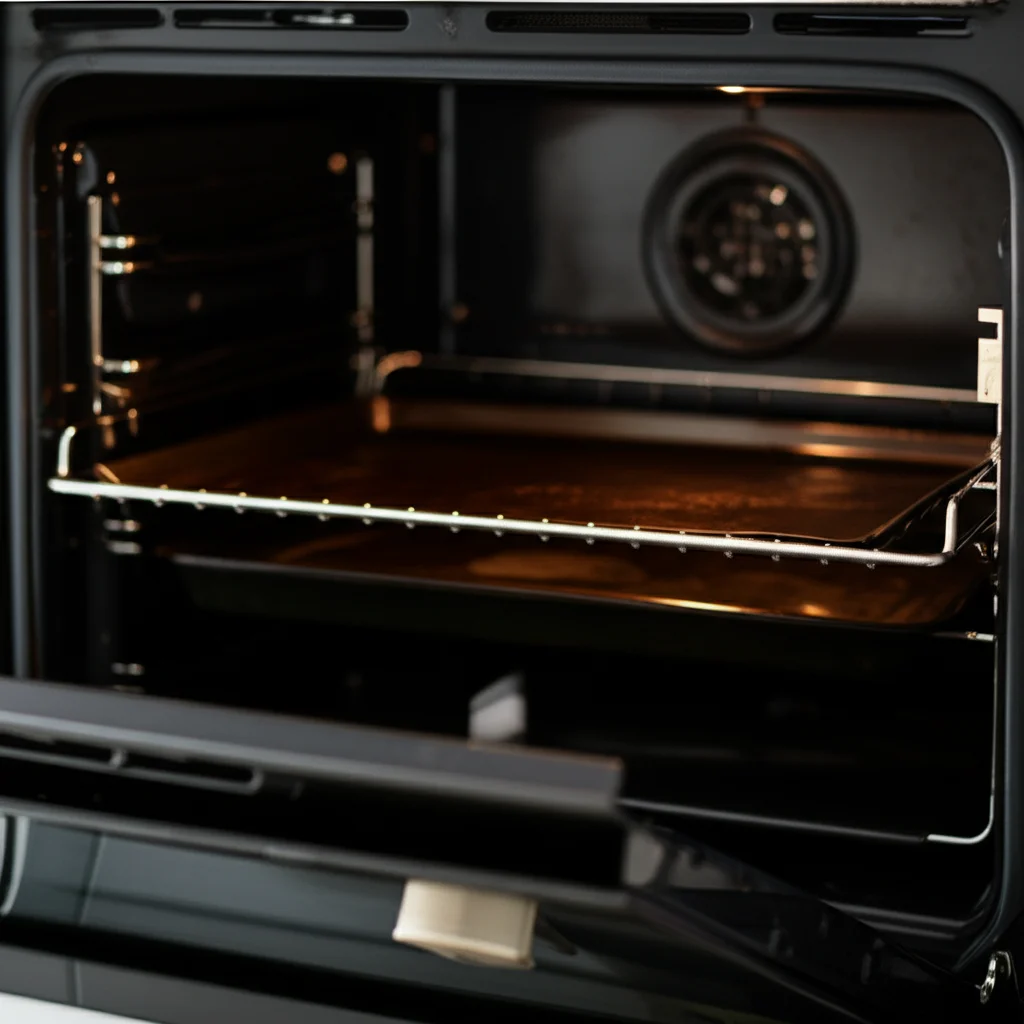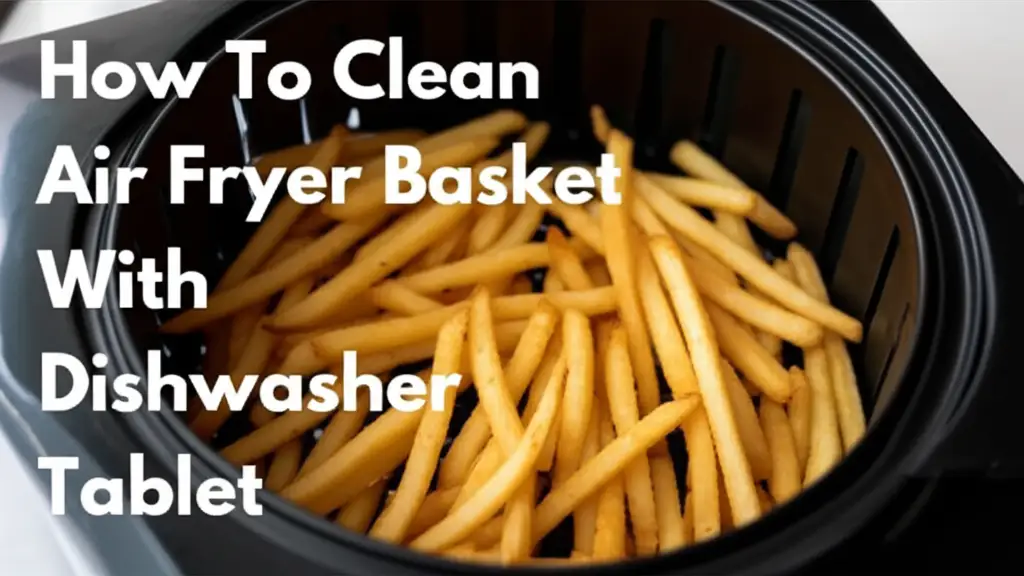· Todd Martin · Kitchen Cleaning · 12 min read
How To Clean A Deep Fryer

Achieve a Sparkling Fryer: How to Clean a Deep Fryer
A deep fryer gives us crispy, delicious food. However, it collects grease and old oil over time. This build-up affects food taste and fryer performance. Cleaning your deep fryer regularly keeps it working well. It also ensures your food tastes fresh. This article helps you learn how to clean a deep fryer step-by-step. I will show you how to tackle tough grease and maintain your appliance. We will cover preparation, cleaning different parts, and final maintenance tips. You can keep your deep fryer clean and ready for use.
Takeaway
- Always unplug the fryer and let it cool completely before cleaning.
- Properly drain and dispose of old cooking oil.
- Use warm, soapy water and non-abrasive tools for most cleaning.
- Target stubborn grease with baking soda or specialized degreasers.
- Regular cleaning prevents bad odors and extends your fryer’s life.
To clean a deep fryer, first unplug it and let it cool. Then, remove and properly dispose of old oil. Disassemble removable parts like the basket and element. Clean these parts with hot, soapy water. Use a degreaser or baking soda paste for tough grease. Wipe down the interior and exterior of the fryer body. Rinse all parts well and ensure they are dry before reassembling.
Why Deep Fryer Cleaning Matters
Keeping your deep fryer clean is more than just about appearances. A clean fryer works better and cooks food more evenly. Old oil and grease leave behind residues. These residues can affect the flavor of fresh food. Nobody wants their fries tasting like last week’s chicken. Regular cleaning helps you enjoy pure, delicious fried dishes.
A dirty fryer also poses safety risks. Accumulated grease can be a fire hazard. It can also cause unpleasant smells in your kitchen. Over time, grease build-up can damage heating elements. This shortens the life of your appliance. A clean fryer operates safely and efficiently. It saves you money in the long run by avoiding repairs or replacements. I always make sure my fryer is clean. It keeps my kitchen safe and my food tasty.
Essential Tools and Supplies for Fryer Cleaning
Before you start cleaning your deep fryer, gather all your supplies. Having everything ready makes the process smoother. You do not want to stop midway to find a scrub brush. I always make a checklist before I begin. This helps me stay organized. Using the right tools protects your fryer’s surfaces.
Here is a list of items you will need:
- Gloves: Protect your hands from grease and cleaning solutions.
- Empty Containers: For draining and disposing of old oil.
- Paper Towels or Old Rags: For wiping and initial grease removal.
- Scraper or Spatula: A plastic or rubber one is best for scraping.
- Dish Soap: A good quality, grease-cutting dish soap.
- Baking Soda: A natural abrasive and degreaser.
- White Vinegar: Helps cut through grease and remove odors.
- Soft Brushes or Non-Abrasive Scrubber: For scrubbing surfaces without scratching.
- Cleaning Cloths or Sponges: For wiping and rinsing.
- Water: Hot water works best for grease.
You might also consider a specialized degreaser for very stubborn stains. Some people prefer commercial degreasing solutions. Read the product label carefully before using any strong cleaners. Always make sure the product is safe for your fryer’s materials. I find that a combination of dish soap, baking soda, and vinegar usually does the trick for most home fryers.
Safe Oil Disposal and Initial Preparation
The first step in cleaning your deep fryer is to handle the old oil. Never pour hot oil down your drain. Hot oil can cause severe burns. It also clogs pipes as it cools. This creates big plumbing problems. Always let the oil cool completely before you do anything. This is a very important safety step.
Once the oil is cool, you have a few options for disposal. You can pour it back into its original container. Or, you can use a sealable, non-recyclable container. Examples include an old milk carton or a plastic jug. Some areas have oil recycling programs. Check with your local waste management services for options. Proper oil disposal protects your environment and your plumbing.
After dealing with the oil, unplug the fryer from the power outlet. This prevents any accidental starts during cleaning. Remove the frying basket. If your fryer has a removable heating element, take that out too. Scrape away any large pieces of food or debris from the fryer pot. You can use a rubber spatula or a plastic scraper for this. This initial scraping makes the deep cleaning process much easier. It stops loose bits from getting stuck later on.
Deep Cleaning the Fryer Basket and Heating Element
The fryer basket and heating element face the most direct contact with food and oil. They often accumulate the most stubborn grease. Cleaning them thoroughly is important for good results. I recommend cleaning these parts separately. It allows for more focused attention.
For the frying basket, you can usually wash it in your sink. Fill a basin with hot water and a generous amount of grease-cutting dish soap. Submerge the basket in the soapy water. Let it soak for at least 30 minutes, or longer for very greasy baskets. Soaking helps loosen dried-on grease and food particles. After soaking, scrub the basket with a stiff brush or a non-abrasive scouring pad. Pay attention to the mesh and corners. Rinse the basket thoroughly under running water. Make sure no soap residue remains. For specific tips on cleaning this part, check out our guide on how to clean a fryer basket.
The heating element can be trickier. Never submerge the electrical parts of the heating element in water. This can damage the fryer. If the element is removable, gently wipe down the metal coils. Use a damp cloth with a little dish soap. For baked-on grease, make a paste with baking soda and water. Apply the paste to the dirty areas. Let it sit for a few minutes. Then, gently scrub with a non-abrasive brush or sponge. Wipe off the paste and grease with a clean, damp cloth. Ensure the heating element is completely dry before returning it to the fryer.
Cleaning the Fryer Body and Interior Pot
With the basket and heating element clean, you can focus on the main fryer body. This includes the interior pot and the exterior casing. The interior pot holds the oil and often collects a thick layer of grease. The exterior can also get splattered with oil. I find it satisfying to see the progress here.
First, wipe down the interior pot with paper towels. Remove as much excess oil and loose debris as possible. For hard-to-reach areas, a long-handled brush helps. Next, fill the fryer pot with hot water, almost to the fill line. Add a generous amount of dish soap. You can also add about half a cup of white vinegar to the water. Vinegar helps break down grease and reduce odors. For very tough, burnt-on grease, some people suggest boiling the water in the fryer (if safe for your model and only if the heating element is fully enclosed and meant to be submerged). Check your fryer’s manual first. Otherwise, let the hot soapy water sit in the pot for 15-30 minutes. This soaking action helps loosen tough grease.
After soaking, drain the water. Scrub the interior surfaces with a non-abrasive sponge or brush. For particularly stubborn grease spots, make a paste of baking soda and a little water. Apply the paste directly to the grease. Let it sit for a few minutes. Then, scrub gently. Baking soda is effective at lifting grease without scratching. This also works well for cleaning general kitchen grease, such as the kind you find when you clean grease from an air fryer. Once clean, rinse the interior thoroughly. You may need to fill and drain with clean water a few times. Ensure no soap residue remains.
For the exterior, wipe down the surfaces with a damp cloth and a little dish soap. Pay attention to buttons and handles. Dry the exterior completely with a clean cloth. A clean exterior prevents grease from spreading. It also makes your fryer look new.
Tackling Stubborn Grease and Odors
Sometimes, regular soap and water are not enough for deep fryer grease. Stubborn, burnt-on residue can cling to surfaces. Old oil can also leave behind a lingering smell. Dealing with these issues ensures a truly clean fryer. I have a few tricks for these tough spots.
For truly tough grease, baking soda is your best friend. Make a thick paste by mixing baking soda with a small amount of water. Apply this paste directly to the stubborn grease spots. Let the paste sit for 15-30 minutes. The baking soda works to absorb and break down the grease. After it has sat, use a non-abrasive scrubber or brush to gently scrub the area. You will find the grease comes off much easier. Rinse the area thoroughly with clean water afterwards. You may need to repeat this process for extremely tough spots.
To remove lingering odors from your deep fryer, white vinegar is excellent. After cleaning and rinsing the fryer pot, wipe down the interior with a cloth dampened with undiluted white vinegar. Let the vinegar air dry inside the pot. The vinegar neutralizes odors. You can also place a bowl of white vinegar inside the fryer (unplugged) overnight. This absorbs any remaining smells. Another option is to use activated charcoal. Place a small bag of activated charcoal inside the fryer overnight to absorb odors.
Sometimes, the old oil itself is the source of a bad smell. Learning how to clean deep fry oil can help reduce odors in the long run. Proper oil filtration and disposal prevent odors from setting in. A combination of baking soda for grease and vinegar for odors will leave your fryer smelling fresh. These simple kitchen staples are powerful cleaners.
Reassembly and Regular Maintenance Tips
After all parts of your deep fryer are clean and dry, it is time to put it back together. Ensure every component is completely dry before reassembly. Any moisture can cause problems when you use the fryer next. It can also lead to rust. Rust shortens the life of your appliance. A quick check of each part for dryness is a good habit.
Carefully reinsert the heating element, if it was removable. Make sure it is securely in place. Then, place the clean frying basket back into the pot. Before plugging in the fryer, double-check that all components are correctly seated. This ensures safe operation. Once assembled, you can store your fryer or fill it with fresh oil. You are now ready for your next batch of delicious fried food.
To keep your deep fryer clean between deep cleans, consider these regular maintenance tips:
- Filter Oil After Each Use: Once the oil cools, strain it through a fine-mesh sieve or cheesecloth. This removes food particles. Clean oil lasts longer and tastes better.
- Wipe Down After Each Use: After frying and the fryer cools, wipe the exterior and rim with a paper towel. This prevents grease build-up on the outside.
- Change Oil Regularly: Do not reuse oil too many times. Old, degraded oil affects food quality and creates more residue. Refer to your fryer’s manual for oil change recommendations.
- Empty and Clean Promptly: Do not leave old oil in the fryer for extended periods. The longer it sits, the harder the grease will be to clean.
- Store Properly: If you store your fryer for a while, ensure it is empty and clean. Cover it to prevent dust accumulation.
Following these tips will make your deep cleaning tasks much easier. It extends the life of your deep fryer. I find that a little effort after each use saves a lot of work later on.
Frequently Asked Questions
How often should I clean my deep fryer? You should do a full deep clean of your deep fryer every 5-10 uses, depending on how often you fry and what you cook. Daily wiping down and oil filtering are good habits. This keeps your fryer in top condition. It also prevents grease from building up too much.
Can I put my deep fryer parts in the dishwasher? Check your specific deep fryer’s manual. Some baskets and removable parts are dishwasher safe. The main body with electrical components is never dishwasher safe. Always hand wash these parts to avoid damage. This protects your appliance’s function and safety.
What is the best way to dispose of old deep fryer oil? Let the oil cool completely. Then, pour it into a sealable, non-recyclable container like an old milk jug or plastic bottle. Throw this container in the trash. Do not pour oil down the drain. Some local recycling centers accept used cooking oil.
How do I remove burnt-on grease from the bottom of my fryer? For burnt-on grease, make a thick paste of baking soda and water. Apply it directly to the affected areas. Let it sit for 15-30 minutes. Then, scrub with a non-abrasive sponge or brush. Rinse thoroughly. Repeat if necessary for very stubborn spots.
Can I use harsh chemical cleaners on my deep fryer? It is best to avoid harsh chemical cleaners. They can damage the fryer’s finish or leave chemical residues. Stick to natural cleaners like baking soda, vinegar, and dish soap. If you use a commercial degreaser, choose one safe for food contact surfaces. Always read product instructions carefully.
My deep fryer still smells bad after cleaning. What can I do? After cleaning, wipe the interior with white vinegar. Let it air dry. Or, place a bowl of white vinegar or activated charcoal inside the fryer overnight. These items help absorb lingering odors. Ensure all old oil and food particles are completely removed.
Conclusion
Keeping your deep fryer clean is easy. It needs consistent care. You now know how to clean a deep fryer step-by-step. You can manage the oil, tackle stubborn grease, and maintain your appliance. A clean fryer means safer operation. It ensures tastier food for you and your family. I find that a little cleaning effort goes a long way. This guide gives you the tools and knowledge. Start your deep fryer cleaning routine today. Enjoy fresh, delicious fried foods every time. Take good care of your deep fryer. It will serve you well for years.





